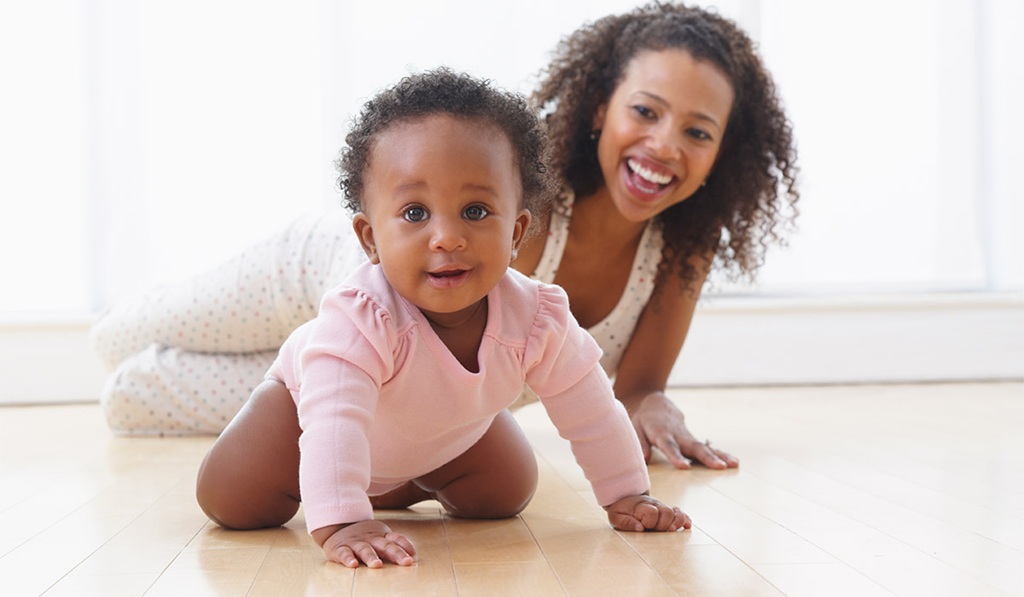Crawling is a major developmental milestone for babies, usually occurring between 6 to 10 months of age. This phase is crucial for strengthening their muscles, enhancing coordination, and fostering independence. However, some babies take longer than others, and as a parent, you might be wondering how to get baby to crawl.
Encouraging crawling requires a combination of the right environment, proper exercises, and patience. In this guide, we’ll explore the best ways to motivate your little one to start moving, ensuring a safe and fun experience along the way.
Before diving in, consider using a breathable baby lounger as a comfortable spot for your baby to rest between practice sessions.
Understanding the Importance of Crawling
Crawling is more than just a baby’s way of moving around—it plays a significant role in brain development and coordination. It enhances hand-eye coordination, spatial awareness, and muscle strength while preparing your child for more complex movements like standing and walking.
When Do Babies Start Crawling?
Most babies begin to crawl between 6 to 10 months, but some may skip crawling altogether and move directly to standing or walking. If your baby isn’t crawling yet, there’s no need to worry—each child develops at their own pace.
Signs Your Baby is Ready to Crawl
Before babies start crawling, they often exhibit certain signs indicating they are preparing for mobility:
- Tummy Time Enthusiasm: Babies who enjoy tummy time build the necessary muscle strength for crawling.
- Rocking on Hands and Knees: Your baby may start to rock back and forth while on their hands and knees.
- Scooting Backward: Some babies move backward before figuring out how to crawl forward.
- Increased Core Strength: Babies need strong core muscles to support their movement.
Effective Ways to Encourage Crawling
If you’re wondering how to get baby to crawl, here are some expert-recommended methods to encourage movement:
-
Increase Tummy Time
Tummy time is essential for strengthening a baby’s back, neck, and shoulder muscles. Try the following:
- Start with a few minutes a day and gradually increase the duration.
- Place a toy in front of your baby to keep them engaged.
- Get down on their level to encourage interaction.
-
Use Toys as Motivation
Placing a favorite toy just out of reach encourages your baby to move toward it. Choose toys that:
- Make noise, such as rattles or musical toys.
- Are brightly colored to attract attention.
- Move slightly, like rolling balls or wind-up toys.
-
Create an Obstacle Course
Setting up a simple baby-safe obstacle course helps improve strength and coordination. Use:
- Soft pillows for climbing over.
- Rolled-up blankets for crawling under.
- A safe, non-slip floor surface for traction.
-
Demonstrate Crawling
Babies often mimic what they see. If your baby is hesitant, get down on all fours and crawl around to demonstrate. Make it fun by clapping, smiling, and encouraging them to follow you.
-
Encourage Barefoot Exploration
Letting your baby explore barefoot improves their grip and balance, making crawling easier. Socks can sometimes be too slippery, preventing movement.
Common Reasons Why Babies Delay Crawling
Some babies take longer to crawl due to:
- Lack of Tummy Time – If a baby hasn’t spent much time on their stomach, they might need extra encouragement.
- Preference for Sitting – Some babies prefer sitting and playing rather than moving.
- Different Developmental Paths – Some babies skip crawling altogether and move straight to walking.
- Medical Conditions – In rare cases, developmental delays may be linked to underlying health concerns.
If you’re concerned about your baby’s movement, consult your pediatrician for reassurance.
Related: 4 Exercises to Help Your Baby Walk
How to Make Crawling Safe for Your Baby
-
Baby-Proof Your Home
Ensure that your crawling baby is safe by:
- Covering sharp edges and furniture corners.
- Securing heavy furniture to prevent tipping.
- Keeping small objects, cords, and choking hazards out of reach.
-
Provide a Safe Floor Surface
Use non-slip play mats or carpets to create a comfortable crawling space. Avoid hard floors that may be too slippery.
-
Supervise at All Times
Even with baby-proofing, always keep an eye on your crawling baby to prevent falls or injuries.
Transitioning from Crawling to Walking
Crawling is a step toward walking. Once your baby starts crawling confidently, you can encourage the next milestone by:
- Providing push toys to help with balance.
- Allowing them to cruise along furniture.
- Holding their hands as they take steps.
With time, your baby will progress naturally from crawling to standing and walking.
FAQs
What if my baby doesn’t crawl at all?
Some babies skip crawling entirely and move straight to walking. If your baby is reaching other milestones, there’s usually no need for concern.
How can I strengthen my baby’s muscles for crawling?
Tummy time, playing on all fours, and gentle stretching can help build the muscles needed for crawling.
Is it okay if my baby only scoots instead of crawling?
Yes, some babies develop unique movement patterns, such as scooting on their bottom instead of traditional crawling.
Should I use baby walkers to help my baby crawl?
Baby walkers are not recommended as they can delay natural motor skill development and pose safety risks.
How can I make crawling more fun for my baby?
Create a playful environment with engaging toys, obstacle courses, and interaction to make crawling an enjoyable experience.
Related: What Position is Best for a Baby to Turn?
Conclusion
Learning how to get baby to crawl is an exciting journey that requires patience, encouragement, and the right environment. Every baby develops at their own pace, so celebrate their progress, whether they crawl traditionally, scoot, or skip crawling altogether.
By using tummy time, engaging toys, and safe spaces, you can motivate your baby to start crawling confidently. And remember, their next adventure—walking—is just around the corner!





